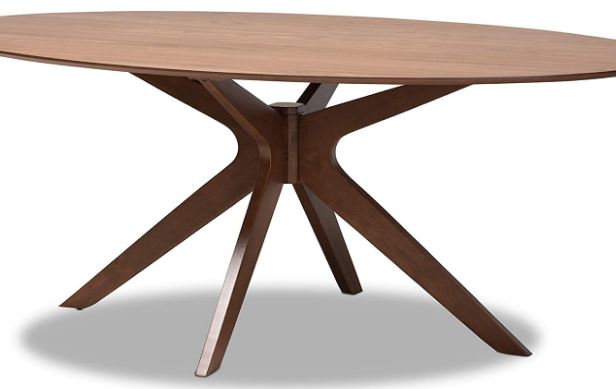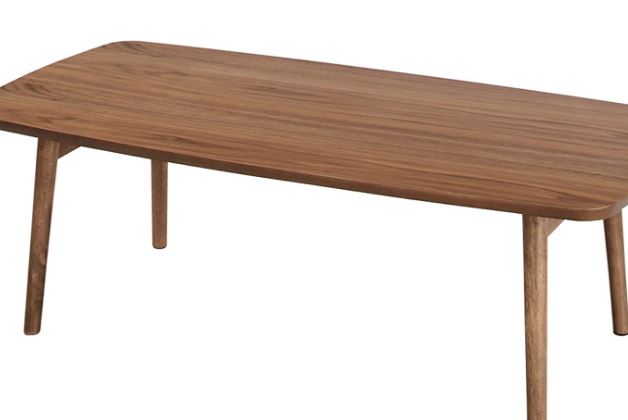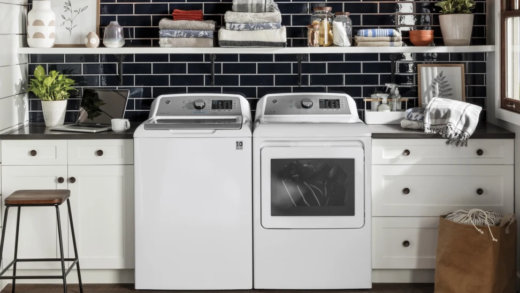Although the majority of people believe it to be a hybrid of elastic and wood, rubberwood isn’t quite that. Rubberwood is actually a medium-density hardwood that is produced by harvesting the Pará rubber tree.
Below we discuss the pros and cons of rubberwood furniture pieces, mainly focusing on why rubberwood may not be the best choice for your next woodworking project.
Table of Contents
What is Rubberwood?
From the Para rubber tree, rubberwood is a type of hardwood. Tropical hardwoods known as para rubber trees are native to Asia and Africa. There are a few rubber tree plantations in South America as well.
The latex that rubber trees produce, which is extracted from their bark and used to create natural rubber, is what they are most famous for. The cycle of making latex lasts six years.
Contrary to popular belief, rubberwood isn’t just about latex. Additionally, it generates medium-textured, resilient wood that is strong and useful for a variety of purposes, including furniture and cabinetry.
Some of the least expensive solid wood furniture is made of rubberwood. Janka’s scale of wood hardness rates the wood at 995.
What Are the Pros of Rubberwood Furniture?
There are five advantages of rubber wood furniture listed.
Sustainability
According to WWF, about 10% of the world’s forests are cleared each year to make way for fast-wood forests. The environment may be severely harmed if trees are cut down at a faster rate than they are growing. It may result in landslides, floods, and soil erosion. The effects of global warming may also be hastened by it. Since you’re using trees that would have been burned otherwise when you harvest rubberwood, these effects can be minimized.
Durable
The flexibility of rubberwood is not as great as most Westerners believe. It is a member of the maple family and is quite durable. It is 500 pounds hard, stiff, and has a strength of about 9500 pounds per square inch.
Cost-effective
Rubberwood typically sells for less than most types of wood because it is seen as a byproduct. The general public chooses other types of timber like oak, maple, or cherry because of the perception that rubberwood is not a durable material.
Ideal for Furniture
Rubberwood that has been processed is very stable, with little shrinkage and cracking, making it ideal for furniture. Furthermore, rubberwood has a fantastic medium tan to blonde color.
Takes Stains Well
Rubberwood works well with finishes and stains. This is especially useful if you want to alter the appearance of the object to match your preferences and the environment.
What Are the Cons of Rubberwood Furniture?
Before choosing rubberwood for your upcoming furniture-making project, be aware of the top disadvantages listed below.
Twisting and Warping

Rubberwood is easily twisted and warped, which is one of its biggest drawbacks. The high moisture content of rubber wood is the primary cause.
A timber with high moisture content is much more likely to twist and warp as it dries. To reduce twisting and warping, you can, however, season your rubberwood lumber.
It’s Perishable
Sadly, rubberwood degrades quickly. It is particularly prone to a fungus-caused condition called white rot. Brown rot advances slightly more quickly than white rot. But the harm is greater.
Rubberwood is prone to fungus and insect stains in addition to rotting. Both can compromise the quality of rubberwood furniture.
Rubberwood is Not Ideal for Outdoor Furniture
Rubberwood is not a good material for outdoor furniture because of its propensity to absorb moisture. If not, there is a multiplied risk of rotting.
This means that rubberwood can only be used to make indoor permanent furniture. As an alternative, during the winter you must bring the furniture inside.
It Isn’t Waterproof
The wood that absorbs the least water is rubberwood. But it isn’t the best kind of waterproof wood either. Pine is much more waterproof than rubberwood, so you cannot compare the waterproofing capabilities of the two.
In addition, rubberwood is vulnerable to seepage issues, particularly when the adhesive deteriorates. Therefore, you should generally keep the furniture away from areas with a lot of moisture.
Raw Rubberwood Causes Latex Allergy
If inhaled, the natural latex produced by rubber trees can cause allergic reactions. Not everyone is allergic to latex, but those who are can have mild to severe symptoms, some of which can be fatal.
Rashes, hives, skin irritation, a runny nose, and breathing problems are frequently present as symptoms.
Stains from the Seasoning Process
The majority of woodworkers season rubberwood to increase its durability, as we’ve already mentioned. In order to maintain the integrity of rubberwood furniture, you must clean/wipe it with specific chemicals.
Sadly, rubberwood furniture can get stained by seasoning and cleaning agents. Therefore, some professionals suggest washing the furniture with warm water instead. Warm water doesn’t work as well as chemicals do, though.
Prone to Insect Attacks
Numerous insect species that may eventually harm your furniture are drawn to rubberwood. Longicorns, snout beetles, and other Coleopteran species are among the insects. Beetle borers, termites, and other pests are also present.
More than 100 different insect species have the potential to damage rubberwood furniture, eating away at the wood’s surface and boring holes into the exposed parts of your furniture.
Requires Special Chemical Treatment Process before the Kiln Drying Process
The long chemical treatment process that rubberwood lumber must undergo before kiln drying should also make you rethink buying rubberwood furniture.
Prior to being dried in a kiln, the wood is typically submerged in boron preservatives to diffuse any lingering natural chemicals and regulate moisture levels. Because of this, you must purchase rubberwood that has been chemically treated.
Unappealing Texture and Grain Pattern
The texture and grain patterns of rubberwood are some of the least appealing. Rubberwood furniture lacks aesthetic appeal despite its not-too-shabby brown color due to its coarse open texture and loose grain pattern.
The problems, however, continue. Rubberwood doesn’t take stains well and takes a very long time to dry because the grain pattern is difficult to distinguish.

How to Care for Rubberwood Surfaces?
If the wood is correctly treated before use, caring for rubberwood furniture shouldn’t be too challenging. Follow the tips below;
- Wash the furnishings with soap and water once a year. Use a fresh, dry cloth to wipe the furniture down after it has been thoroughly cleaned.
- To brighten the patina, wax it once every two to three years after removing the previous coat with a wax-stripping detergent.
Rubberwood Vs Common Types of Wood
You may be wondering how rubberwood compares to other common hardwoods (and softwoods). Here is a quick comparison of the two.
Acacia Vs Rubberwood
Acacia Janka’s rating is 2350; therefore, acacia is harder than rubberwood (995 It is also stronger (Janka). Moreover, rubberwood feels artificial and cheap compared to acacia wood, which has a warm and natural appearance.
Rubberwood Vs Maple
Furniture made of rubberwood is inferior to that of maple. First off, maple is more powerful (1450 vs. 995 Also, compared to rubberwood, it is more resilient (Janka). Above all, rubber wood is less resilient to the elements and pests than maple wood.
Birch Vs Rubberwood
Birchwood and rubberwood share many similarities. They are comparable in terms of quality, density, and color, for example. They both are also vulnerable to fungus stains and insect attacks.
They also differ in a number of ways, though. For instance, birch has a more distinctive and appealing grain pattern than rubberwood, which is significantly more expensive.
Rubber Wood Vs Oak
The color and grain structure of oakwood and rubberwood are their main differences. Red oak, the more common species, has a reddish-brown tint, whereas white oak is pale with a faintly greenish tint.
Despite having a more compact, symmetrical, and straight grain, rubberwood has a similar coarse texture. Plus, oak is more expensive than rubber wood because it is a harder wood.
FAQ
Is Rubber Wood a Good Wood for Furniture?
The use of rubberwood for outdoor furniture requires a preservative even though it is resistant to fungus, bacteria, and mold. Rubberwood is best suited for indoor projects while teak claims top billing for outdoor pieces.
Is Rubberwood Real Wood?
Rubber wood is real wood, yes. The idea that rubberwood is elastic and cannot be compared to true solid wood is a widespread one. The Par’s rubber tree (Hevea brasiliensis), which produces rubberwood, is a medium-density tropical hardwood with a light color. Usually, rubber plantations in South America, Asia, and Africa contain it.
Is Rubber Wood a Hardwood?
Yes, rubberwood is hardwood. The medium-to-tall rubber tree is a deciduous tree with quick growth that has evolved to withstand cold and dry stresses for months at a time. It has large, thick, typically oblong leaves that can reach a height of 30 inches (12 inches), just like many other hardwood trees. Each year at this time, the leaves fall off.
Is Rubber Wood Durable?
Yes, despite what a lot of people think, rubberwood is not a flexible tree. It is a member of the maple family and is very durable. It has a strength rating of 9500 psi, a stiffness of 1.3 million psi, and a hardness of 500 pounds. Only hardy hardwood species can claim these ratings.
Is Rubberwood Good Quality?
Yes, one of the best types of wood for furniture construction is rubberwood. Rubberwood’s resistance to scratching is one of its best features. Also resistant to denting is rubberwood furniture. More significantly, rubberwood has a Janka rating of 995, making it a moderately strong wood.
Conclusion
Given the above advantages and disadvantages, it is safe to say that rubberwood will make a sturdy and sustainable furniture material unless you are allergic to latex. However, if you plan to use it for outdoor furniture, make sure the wood is properly treated and sealed to prevent warping and twisting.



